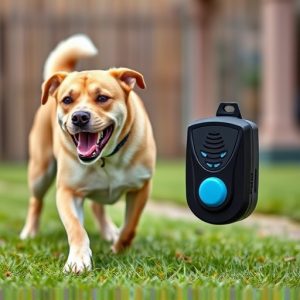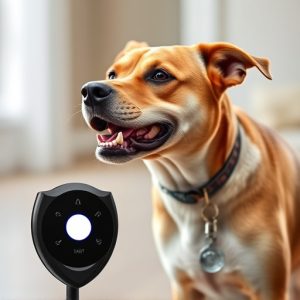Calm Neighborhood Canines: Reviewing Anti-Barking Handheld Devices for Effective Coverage Area
Barking dogs disrupt neighborhoods, but handheld dog deterrents offer a non-violent solution. These…….
Barking dogs disrupt neighborhoods, but handheld dog deterrents offer a non-violent solution. These devices target specific areas with ultrasonic sounds or vibrations, calming dogs without harm. Urban dwellers should choose shorter-range models for close neighbors, while suburban users require broader coverage to span larger distances. Product descriptions should be reviewed for suitable Coverage Area and effective penetration through terrain.
In many neighborhoods, excessive dog barking has become a persistent issue, straining relationships among residents. This article explores effective solutions to mitigate the disturbance caused by barking dogs, with a focus on anti-barking devices. We delve into the science behind these tools, reviewing handheld deterrents and their impact on curbing unwanted noise. Furthermore, we guide readers through choosing the optimal solution based on key factors like coverage area, ensuring effective management of canine vocalizations within specific neighborhoods.
- Understanding the Issue: The Impact of Barking Dogs on Neighborhoods
- How Anti-Barking Devices Work: A Review of Handheld Deterrents
- Choosing the Right Solution: Factors to Consider for Effective Coverage Area
Understanding the Issue: The Impact of Barking Dogs on Neighborhoods
Barking dogs can significantly impact neighborhoods, often causing distress and disrupting the peace for residents. Excessive barking can range from persistent, high-pitched barks to sudden, loud outbursts, all of which contribute to a chaotic environment. This issue is not limited to specific areas; it affects both urban and rural communities alike, making it a widespread concern. The sound of a barking dog can travel across yards and even into nearby homes, leading to ongoing annoyance for neighbors.
In many cases, excessive barking results from fear, anxiety, or boredom, highlighting the need for effective yet humane solutions. A handheld dog deterrent that offers targeted coverage within a defined area can be a game-changer for managing this problem. These devices are designed to disrupt a dog’s communication without causing harm, thereby reducing unwanted barking and fostering a quieter, more harmonious neighborhood environment.
How Anti-Barking Devices Work: A Review of Handheld Deterrents
Anti-barking devices, especially handheld deterrents, offer a non-violent solution to address excessive dog barking within a neighborhood. These tools work by emitting sounds or vibrations that startle or distract the dog, breaking its concentration on barking. The key to their effectiveness lies in the coverage area and frequency of usage. Handheld models typically have a limited range, usually covering a few meters around the user, making them ideal for targeted intervention during specific barking incidents.
The devices operate on various principles, commonly using ultrasonic sounds or vibration technology. Ultrasonic deterrents produce high-frequency sound waves that are inaudible to humans but can startle dogs, encouraging them to stop barking. Vibration devices, on the other hand, create subtle vibrations that can disrupt a dog’s focus and calm it down. Regular and consistent use of these handheld devices within the designated coverage area can help train dogs to associate certain environments or situations with a pause in barking.
Choosing the Right Solution: Factors to Consider for Effective Coverage Area
When selecting an anti-barking device, understanding your neighborhood’s coverage area is paramount. Not all dog deterrents are created equal; some offer more extensive ranges than others. For optimal effectiveness, consider the size of your neighborhood and the distance you need to cover. If you live in a dense urban area with close neighboring properties, a handheld device with a shorter range might suffice, as it can be easily aimed at problematic dogs. However, if you reside in a quieter suburban setting or face larger distances between homes, opt for models featuring broader coverage areas. These devices ensure that bark control is achieved across your entire neighborhood, addressing the issue comprehensively.
Additionally, terrain and obstructions play a role in determining the effective range. Trees, buildings, or other physical barriers can interfere with signal transmission. Ensure the device you choose accounts for these factors and offers sufficient penetration to reach dogs beyond such obstacles. Read product descriptions carefully to understand their performance in various settings, ensuring the handheld dog deterrent is up to the task of managing barking across your desired coverage area.
In addressing the nuisance of excessive barking in neighborhoods, handheld dog deterrents offer a non-invasive solution. By understanding how these devices work and carefully considering factors like coverage area, pet owners and community members can find effective ways to mitigate disturbance without causing harm to animals. Investing in the right handheld dog deterrent for your specific needs is key to fostering a peaceful living environment for all.


